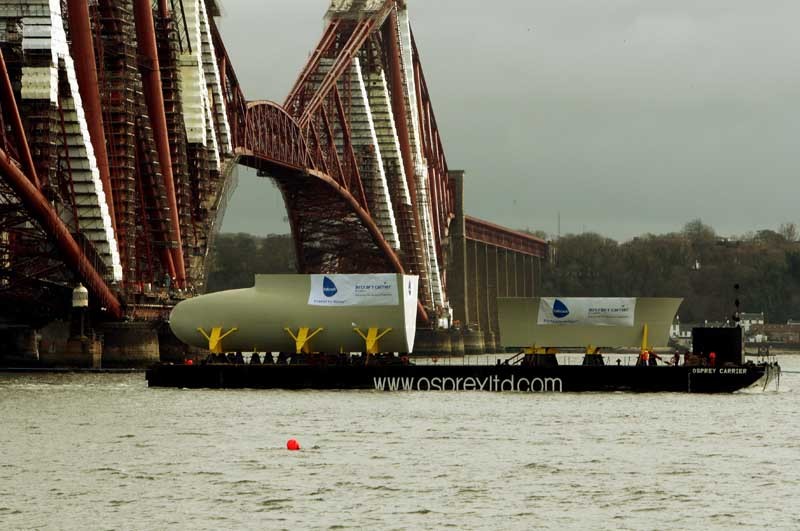The first sections of one of the Royal Navy’s two new aircraft carriers arrived at Rosyth yesterday.
The bow sections of HMS Queen Elizabeth were brought to the Fife dockyard where the warships will be assembled a major milestone for the project, which got under way in 2008 after years of planning.
The two pieces were shipped up to the Forth over the past week from Babcock’s dockyard at Appledore in North Devon.
They passed the Forth bridges yesterday afternoon on their way to the dockyard, their arrival delayed by last week’s bad weather.
The bulbous bow, about the size of the front of a submarine, and the upper bow section weigh about 400 tons in all, equivalent to 40 double-decker buses. Once in position they will be more than 50 metres long.
Sections of the ships are being built at six shipyards around the UK with each block transported to Rosyth for final assembly in the UK’s largest dry dock.
Work is under way in Devon, Glasgow, Portsmouth and Tyneside, as well as Rosyth, with Merseyside starting work on the Queen Elizabeth this summer.Amazing sightAircraft Carrier Alliance programme director Geoff Searle said, “Watching the bow as it sailed under the Forth bridges was an amazing sight.
“This marks the first major delivery of the programme to the Rosyth yard, where both these ships will be put together.
“They represent the best of UK industry with sections being made at the country’s major shipyards, supported by hundreds of other firms in the supply chain, providing contracts and work to thousands of people.
“I am delighted Babcock has achieved this first major milestone on time and on budget and I have every confidence that right across the ACA we will continue to see the same level of achievement.”
Mike Pettigrew, Babcock managing director (warships), said, “Today is a milestone for Rosyth. Witnessing these huge blocks arriving marks fantastic progress in the programme.”
The contract to build the aircraft carriers was signed on July 3, 2008.
They will be the biggest and most powerful surface warships ever built for the Royal Navy, 90 metres longer than the navy’s existing aircraft carriers.
HMS Queen Elizabeth and HMS Prince of Wales will each carry 40 aircraft and have a range of 8000 to 10,000 nautical miles.
The first is due to enter service in 2016.
